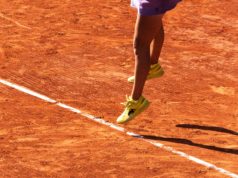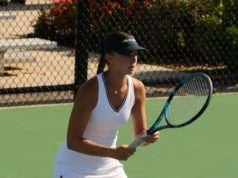By Jim Carella, RSPA, ARA, PTR, PPR, Director of Pickleball TPC Sugarloaf Country Club
Yes, pickleball features several distinct types of volleys, each suited to different situations on the court. Understanding when and how to use them can significantly enhance your game. Here’s an overview of the primary volley types and the factors that influence their selection:
Types of Pickleball Volleys
Punch Volley
Description: A quick, aggressive shot executed with a firm, short stroke.
When to use: Ideal for intercepting high balls at the net, aiming to drive the ball deep into the opponent’s court.
Why it works: The punch volley applies pressure on opponents by targeting their feet or body, making it difficult for them to return the shot effectively.
Block Volley
Description: A defensive shot where the paddle absorbs the ball’s pace, sending it softly over the net.
When to use: Effective against fast-paced shots when there’s insufficient time for a full swing.
Why it works: The block volley neutralizes the opponent’s power, allowing you to reset the point and maintain control.
Swinging Volley
Description: A full swing, low-to-high motion that adds topspin to the ball.
When to use: Best for attacking high balls or when you want to add spin to your shots.
Why it works: The topspin helps the ball dip quickly after crossing the net, making it harder for opponents to return.
Roll Volley
Description: A compact, controlled shot with topspin, often executed with a wrist roll.
When to use: Useful for balls below net level or when you want to keep opponents pinned to the baseline.
Why it works: The roll volley combines control and power, forcing opponents to hit upward and potentially setting up a winning shot.
Dink Volley
Description: A soft, controlled shot played just over the net, typically into the opponent’s non-volley zone.
When to use: Ideal in close-net play to force opponents to move forward and respond with a soft shot.
Why it works: The dink volley keeps the ball low and difficult for opponents to attack, allowing you to control the pace of the game.
Choosing the Right Volley: Key Factors
Positioning: Your location on the court influences your choice. For example, at the net, punch and block volleys are effective, while roll and swinging volleys are better suited for mid-court positions.
Speed of the ball: Fast-paced shots may require a block volley to absorb the speed, whereas slower balls offer opportunities for aggressive shots like the punch or swinging volley.
Height of the ball: High balls are prime candidates for punch or swinging volleys, while low balls may necessitate a roll or dink volley to maintain control.
Tips for Mastery
Practice regularly: Consistent practice helps in developing muscle memory and improving reaction times.
Focus on footwork: Proper positioning and movement are crucial for executing volleys effectively.
Stay calm under pressure: Composure allows for better decision-making and shot execution during fast-paced exchanges.
By understanding and practicing these volley types, you’ll be better equipped to handle various situations on the pickleball court, enhancing both your defensive and offensive play.
 PROFESSIONALSPOTLIGHT: JIM CARELLA
PROFESSIONALSPOTLIGHT: JIM CARELLA
TPC Sugarloaf Country Club
Why are you a member of the ARA? That is a really easy question—for the networking and education. You are never too old or experienced to keep growing as a professional!
What inspired you to be a pickleball coach? Pickleball was just starting to explode and it was a great way for me to continue to be on the court coaching and playing.
What is your favorite memory of being a pickleball coach in Atlanta? Attending the Atlanta Open and meeting the players.
How has pickleball impacted your life? It’s what I do for enjoyment as well as extending my coaching career from tennis. It seems like a great transition from tennis.
What is your proudest achievement? Seeing my students improve and learning to love the game, so much so they are passing their passion to their children.
What is one fun fact about you that most people would not know? I learned to play tennis on the Red Clay of Europe. Living in Belgium from 7th grade until I graduated high school…I was able to play all over Europe in tennis tournaments!
Who is your favorite professional pickleball player and why? I would have to say Ben Johns…but I do admire many others as well!
What advice would you give young coaches in the industry? Keep learning your craft and extend your time to include giving back to the game!
What do you do when you’re not coaching pickleball? Playing pickleball with my friends.
Comments? Working at TPC Sugarloaf for the past 7 years has been a blessing. It has afforded me the opportunity to start the pickleball program and watch it grow into a major part of our members’ activity!




